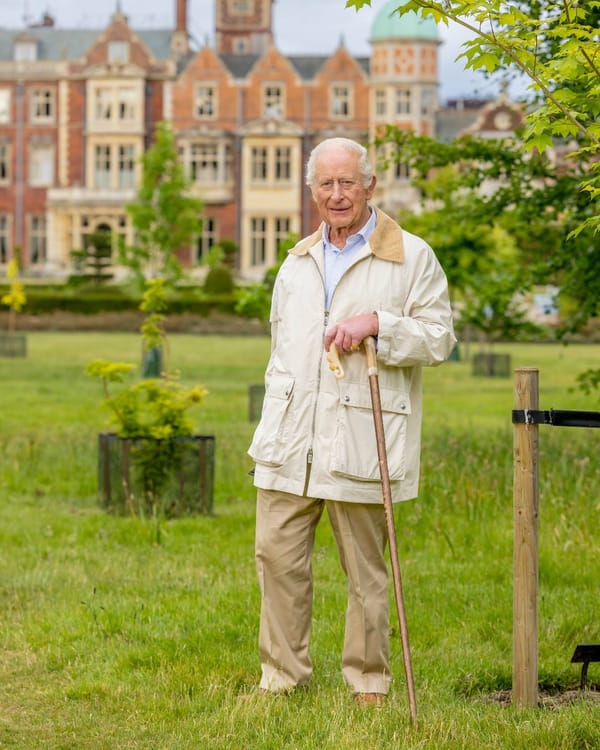Royal 101: Understanding the Changing of the Guard - A Complete Guide

Few ceremonies encapsulate the pageantry and tradition of British royal heritage quite like the Changing of the Guard. This iconic spectacle draws thousands of visitors to London year-round, yet many observers appreciate the visual splendor without fully understanding the rich history, precise military choreography, and practical significance behind the ceremony. This comprehensive guide explores everything you need to know about this quintessentially British tradition.
What is the Changing of the Guard?
At its core, the Changing of the Guard (officially called "Guard Mounting") is a formal ceremony in which one regiment of soldiers (the Old Guard) passes responsibility for protecting royal residences to another regiment (the New Guard). Far more than merely ceremonial, the guards perform a genuine security function, protecting the Sovereign and royal residences.
The ceremony takes place at three main locations in London: Buckingham Palace, St. James's Palace, and the Tower of London. Each location follows slightly different protocols and involves different regiments, though Buckingham Palace hosts the most famous and elaborate version.
The History Behind the Tradition
The Changing of the Guard dates back to the early 16th century when King Henry VII established the Sovereign's Body Guard. However, it was during Queen Victoria's reign that the ceremony began to take its current form and became a must-see London attraction.
The Guards regiments themselves boast even deeper historical roots. The Grenadier Guards, for instance, were formed in 1656 as the First Regiment of Foot Guards. Each of the five regiments of Foot Guards (Grenadier, Coldstream, Scots, Irish, and Welsh) takes turns performing guard duties at the royal residences, bringing their own distinctive uniforms and traditions to the ceremony.
The Ceremony at Buckingham Palace

The Buckingham Palace ceremony remains the most elaborate and widely attended. Here's what happens during a typical Guard Mounting:
Before the Ceremony
Around 10:30 AM, the New Guard forms up at Wellington Barracks, approximately a quarter-mile from Buckingham Palace. Meanwhile, the Old Guard prepares inside the palace grounds.
The Procession
At approximately 10:43 AM, the New Guard leaves Wellington Barracks led by a regimental band playing military marches, popular songs, and sometimes even film themes or contemporary music. The precision marching takes them down Birdcage Walk and past St. James's Park to the palace.
The Ceremony Itself
Upon arrival at Buckingham Palace (around 11:00 AM), the New Guard enters through the gates and forms up in the forecourt. The Old Guard, already in position, presents arms. What follows is an elaborate handover ritual:
- The Captains of the Old and New Guard inspect their troops
- The Ensigns (flag bearers) exchange the regimental colors
- The band plays throughout the ceremony
- The Old Guard formally hands over the palace keys
- The New Guard divides into detachments taking up positions at Buckingham Palace and St. James's Palace
The Conclusion
After approximately 45 minutes, the Old Guard, now relieved of duty, marches back to Wellington Barracks accompanied by their band. The entire ceremony concludes by approximately 11:45 AM.
The Guards Regiments: Who's Who
The soldiers performing the ceremony are not ceremonial guards but fully operational elite soldiers from the Household Division's seven regiments:
The Foot Guards
Identifiable by their distinctive bearskin caps and red tunics, though each regiment has subtle differences in their uniforms:
- Grenadier Guards: White plume on the left side of their bearskin
- Coldstream Guards: Red plume on the right
- Scots Guards: No plume
- Irish Guards: Blue plume on the right
- Welsh Guards: White-green-white plume on the left
The Household Cavalry
Alternating with the Foot Guards at Buckingham Palace during summer months:
- Life Guards: Red tunics, white plumed helmets
- Blues and Royals: Blue tunics, red plumed helmets
These soldiers are not simply ceremonial figures; many have served in combat zones including Afghanistan and Iraq. When not performing ceremonial duties, they train and deploy as regular army units.
Practical Information for Visitors
Schedule
- Buckingham Palace: Daily at 11:00 AM from April to July; on alternate days for the rest of the year (typically Monday, Wednesday, Friday, and Sunday)
- Windsor Castle: Typically at 11:00 AM on Tuesdays, Thursdays, and Saturdays
- St. James's Palace: On days when there is no Guard Mounting at Buckingham Palace
- Tower of London: The Ceremony of the Keys takes place daily at 9:53 PM exactly
Always check the official British Army website before visiting, as schedules can change due to weather conditions, security concerns, or special events.
Best Viewing Spots
For Buckingham Palace:
- The Victoria Memorial (directly in front of the palace gates)
- The palace railings along Birdcage Walk
- Wellington Barracks (to see the New Guard forming up)
For St. James's Palace:
- Friary Court facing the palace
For Windsor Castle:
- Windsor Castle Hill
- The area near Henry VIII Gate
Timing Your Visit
Arrive at least 45 minutes early (9:45 AM or earlier for Buckingham Palace) to secure a good viewing position, especially during peak tourist season (summer months) when crowds can be substantial.
The Ceremony in Context
The Changing of the Guard represents more than just a tourist attraction; it embodies centuries of British military tradition and royal heritage. The precision, discipline, and pageantry on display reflect the values of the regiments involved and their close historical connection to the monarchy.
The ceremony has adapted over time while maintaining its essential character. Music selections have evolved to include contemporary pieces alongside traditional military marches. During special occasions, such as royal birthdays or state visits, the ceremony may feature additional elements or altered protocols.
Despite these adaptations, the core purpose remains unchanged: the legitimate transfer of responsibility for guarding the Sovereign and royal residences, performed with the utmost precision and military bearing.
Beyond Buckingham Palace

While Buckingham Palace hosts the most famous iteration, similar ceremonies occur at other locations:
Windsor Castle
The Changing of the Guard at Windsor Castle follows a similar pattern but in a more intimate setting. The ceremony takes place within the castle precincts, offering visitors a closer view of the proceedings. The Windsor Castle ceremony is particularly significant when the monarch is in residence there.
The Tower of London
The Ceremony of the Keys at the Tower of London is one of the oldest military ceremonies in the world, performed continuously for over 700 years. Each night at exactly 9:53 PM, the Chief Yeoman Warder, accompanied by an escort of Yeoman Warders (Beefeaters), secures the main gates of the Tower. This ceremony requires tickets, which must be booked well in advance due to limited capacity.
The Guards Off-Duty
Despite their iconic status as living symbols of British tradition, the guards are professional soldiers with normal lives off-duty. When not standing sentry or participating in ceremonies, they live in military barracks, undergo regular training, and may deploy on active service.
The stoicism displayed during their ceremonial duties is legendary. Guards must remain motionless while on duty, despite tourist attempts to distract them. This discipline represents years of training and the highest standards of military bearing.
Changing of the Guard Around the World
The British ceremony has inspired similar traditions globally:
- Athens, Greece: The Evzones guard the Tomb of the Unknown Soldier
- Copenhagen, Denmark: Royal Life Guards protect Amalienborg Palace
- Stockholm, Sweden: The Royal Guards at the Stockholm Palace
- Oslo, Norway: Hans Majestet Kongens Garde at the Royal Palace
However, the British Changing of the Guard remains the most famous and elaborate of these ceremonies worldwide.
The Future of the Tradition
As the monarchy evolves, so too does the Changing of the Guard. The ceremony adapted during Queen Elizabeth II's long reign and will continue to reflect the character of King Charles III's monarchy while maintaining its essential traditions.
What remains constant is the ceremony's dual purpose: providing genuine security for royal residences while offering the public a glimpse into Britain's rich heritage of military precision and royal pageantry.
For visitors to London, witnessing this ceremony provides a unique connection to centuries of history and tradition, performed with the same dedication and attention to detail as it has been for generations. In an ever-changing world, the Changing of the Guard stands as a remarkable example of living history—practical, symbolic, and spectacularly British.




